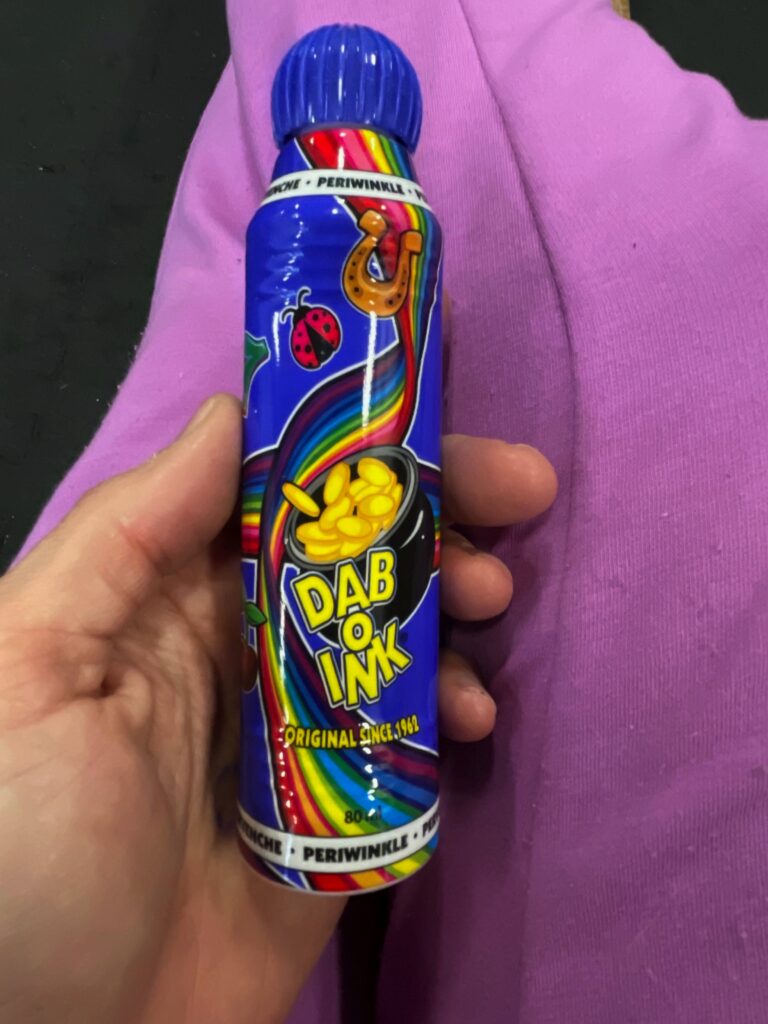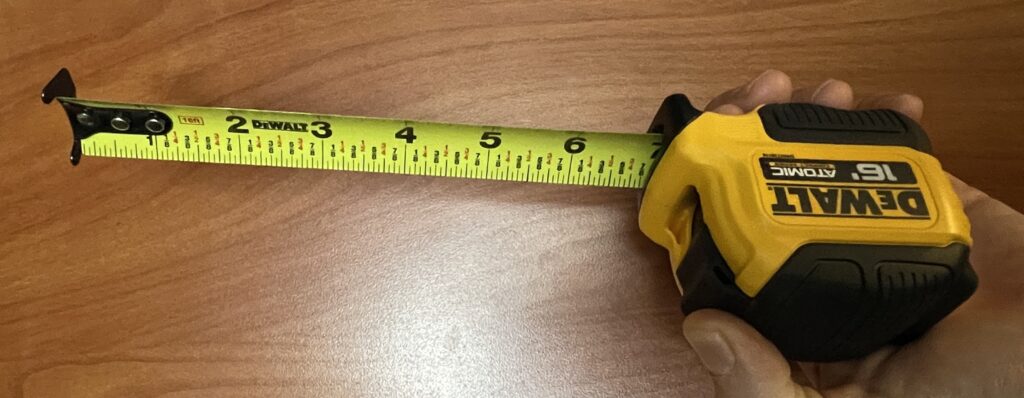Although figures are competed and performed on blank ice, the ability to make marks on the ice is a critical component of training. That has traditionally been accomplished using scribes and the heel of one’s blade, which make marks by cutting into the ice. However, extreme white-ice conditions common in most rinks these days make it difficult to see the marks (and drawing accurate curves with one’s heel is an acquired skill).
Bingo Markers
The challenges of white ice have led to the use of magic markers to draw patters on the ice, most notably the “King Size” Sharpie. Some people tape a marker to their scribe, and modern scribes are even designed with a marker holder! Sharpie markers are a good solution in many rinks, but some (including my own) do not allow them: due to shortcomings in their Zambonis, they are not able to sufficiently clear marks from Sharpies in one pass. Marks end up persisting in ever-lower layers of the ice and then have to be dug out with a toe pick; and apparently the local hockey team is penalized for any non-standard marks left on the ice by figure skaters!
One solution to this problem is to draw only dots (not continuous lines) and commit to scraping away all Sharpie marks at the end of each session with one’s blade. That works well enough, but it is a lot of work, takes away from practice time, and dulls one’s blade over time.
Another solution is to use Bingo Markers, which are easily available from WalMart, Amazon, etc. My rink’s manager says the hockey coaches use it to draw on the ice all the time and it causes no problems. I tried it for the first time yesterday, and it works as promised. It’s really no easier or harder than using a Sharpie, and it comes off more easily, and rink management is happy with it. A win win!

Tape Measures
One other issue: many rinks / clubs do not allow scribes these days, they are considered dangerous during freestyle sessions that would otherwise be suitable to practice figures. (Patch sessions are long gone, don’t expect them to return in your lifetime). The solution: tape measures and a little bit of Geometry! Remember that a circle is the set of points equidistant from the center. So put a dot on the ice for the center, then measure a bunch of points the same distance from that point; and once you have enough points, connect the dots by skating around them on two feet leaning over holding the marker to the ice! This procedure works great and requires basically no skating skills at all. You just need a high-quality tape measure:
- Tape measure are rated on their “reach” and “standout.” The size circle you will be able to conveniently measure on the ice will be no larger than the “standout” rating for a tape measure. For example… if you have an 8 foot radius blade and want to draw 8 foot radius circles, you will need a standout of minimum 8 feet. The larger the standout the better, because it will be easier for you to make each measurement without fussing around. In general, tape measures with larger standout will be wider.
- It would be convenient to be able to measure across an entire diameter of a circle. That will require a MINIMUM 16 foot standout, which gets you into some higher-end chunkier tape measures. If you don’t want to deal with that, then content yourself with measuring only the radius.
I use the DeWalt 16′ Atomic measure. It is a mid-range tape measure, but I feel barely adequate for use laying out large figures. I would recommend a larger / wider / longer tape measure, but it would be heavier and harder to carry around in my pocket on the ice. Tradeoffs, but at least it’s lighter than as scribe… Just don’t buy the cheap tape measures. Try them out at Home Depot, get one that feels good in your hands!

Advanced Techniques
As my skills have improved, and I am increasingly able to skate a Forward Outside circle on a stable keen edge, my need for markers and tape measures has diminished. Also, measuring things out by stepping sideways is getting more accurate. If I don’t want to take the time for a careful layout (for example if the session is short), I can just skate a stable Forward Outside circle, then inspect the tracing and draw a bunch of dots along it. If I have a little more time, I can draw straight tangent lines along the sides and top with my blade, and then skate the Forward Outside edge to hit those lines. Using hockey dots helps speed the process because I don’t need to measure to the top. I like to do things in different ways on different days: some days my layout is more accurate, which helps train my skating accuracy; whereas other days I work explicitly on making as-good-as-possible circles without an elaborate layout.
I’m still working on the basics to use my heel for a perfect loop size circle…